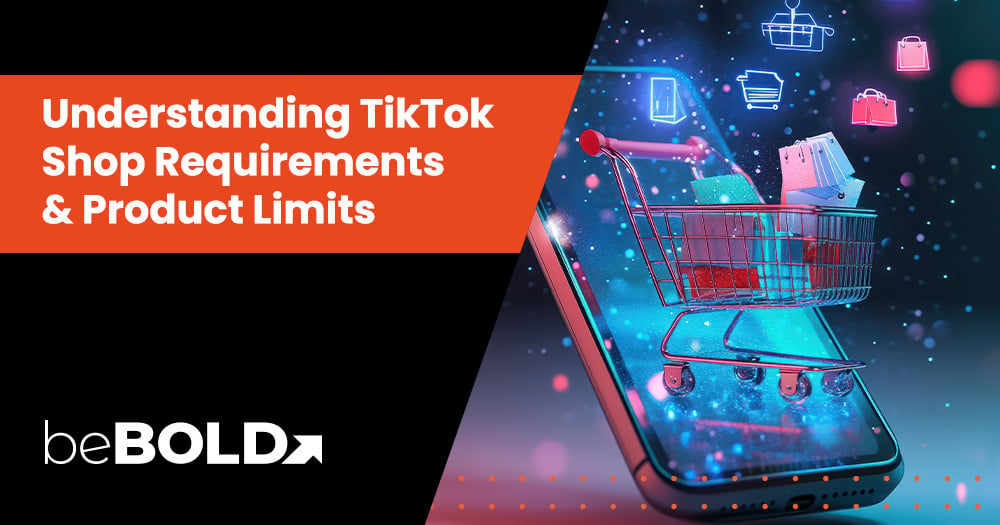As a business selling products on Amazon, you understand the importance of securing higher search rankings. These results can significantly impact your visibility, clicks, and, ultimately, your sales against the 2 million other retailers on Amazon. Results are entirely reliant on the whims of the Amazon algorithm, and the most current version is the A10.
Amazon’s A10 algorithm is the search engine that determines where your products appear in search results. Understanding the A10 algorithm is vital for sellers who want to stand out in the vast Amazon marketplace. By aligning your optimization efforts, you can greatly improve your product’s chances of reaching your target audience.
This infographic will demystify the workings of the A10 search algorithm, discuss its key factors, and reveal best practices to boost your search rankings. Whether you’re an experienced seller refining your strategies or a newcomer navigating the Amazon marketplace, this guide will equip you with the knowledge and tools necessary for success.

What is the Amazon A10 Algorithm?
The Amazon A10 algorithm is the latest version of a proprietary search engine developed by Amazon. It decides the order of the search results when a customer searches for something. It sorts products using artificial intelligence and natural language processing and improves its capabilities through machine learning.
How Does the Amazon A10 Algorithm Work?
The algorithm employs a ranking system that assigns relevancy scores to products based on specific factors like searches, product descriptions, and external signals. Products with higher scores enjoy better rankings in search results, enabling customers to quickly find what they’re seeking. The algorithm also benefits from gathering more data, improving its efficiency.
The details it considers include:
- Front-end keywords
These are the strategically placed keywords sellers place in product titles and bullet points to align with popular search terms.
- Backend keywords
Sellers place backend keywords in a product’s meta tags, which aren’t visible to customers but still affect the algorithm.
- Customer reviews
Positive reviews contribute significantly to the ranking results by telling the algorithm which products satisfy customers.
- Sales velocity
Sales velocity is the rate at which you sell a product, and it helps the algorithm decide how much demand there is for the item.
- Conversion rates
The conversion rate is how many listing visitors finish a purchase. Higher rates tell the algorithm that the product and its listing are appealing.
- Seller’s authority
The seller’s authority is the merchant’s performance history on the platform. A reputable seller with a good track record is more likely to receive a higher relevancy score.
- Click-through rates
The click-through rate (CTR) measures the frequency at which users click on a product listing when it appears on search results. A high CTR means the product’s presentation is attractive to customers.
What is the Amazon A9 Algorithm?
The Amazon A9 algorithm served as the precursor to the A10 algorithm. Its purpose was the same as the A10’s – providing relevant results to customers, but it had distinct differences in terms of the indicators it uses and the weight it gives said indicators.
What is the Difference between Amazon A9 and A10 algorithms?
The A10 algorithm marks a shift in Amazon’s approach by placing increased importance on external signals like reviews and social media mentions. In contrast to its predecessor, which primarily relied on internal data such as sales history and conversion rates, the A10 algorithm now recognizes the significance of customer engagement within and outside the platform.
The shift gives the A10 algorithm a broader perspective on customer behavior and preferences, enabling it to deliver more relevant search results.
Amazon Search Algorithm: What Changed and What Remained?
The table below summarizes the changes the A10 update brought and the remaining features from the A9 algorithm.
|
What’s New With A10 |
What Remained From A9 |
|
|
As you can see, the algorithm still places importance on internal information, such as the sales history, relevant keywords, conversion rate, and reviews on the website. To add to these data points, Amazon selected others in the A10 update, including the seller’s authority, click-through rates, and sales figures.
However, Amazon also added external markers like the off-site source traffic and sales to broaden the algorithm’s perspective. The A10 update reinforces what the A9 algorithm was already good at and adds more considerations to make it even better.
What Did Amazon Move to the A10 Algorithm?
The customer! Amazon has always placed its customers first. It even says so in its mission statement: "…To be Earth's most customer-centric company… Our actions, goals, projects, programs, and inventions begin and end with the customer top of mind.” Through the A10 algorithm, Amazon can give customers better experiences.
Here are the things the A10 algorithm does better than its predecessor:
1. Improved search accuracy and speed
The A10 improves search accuracy and speed, allowing users to get the desired results faster.
2. Greater use of external signals
It considers more external data, providing more insight into what the customers do outside the platform.
3. Improved customer engagement
The A10 meets more customers’ needs and expectations thanks to better search results, improving engagement.
4. Automated learning
Machine learning helps it learn from customer feedback and continuously refine its search result process.
5. Better optimization for mobile
The A10 update also improved functionality for mobile users, allowing people to shop on the go.
6. Improved ranking of products
Because the A10 considers a broader range of factors than the A9, it can rank products better.
7. Enhanced data intelligence
Besides increasing the A10’s factors, this update also harnesses data intelligence to gain deeper insights into customer preferences from existing data points.
8. Improved personalization
The A10 can better tailor results to individual users, delivering a more targeted shopping experience.
9. Increased relevance of search results
The A10 update makes search results significantly more relevant by improving its algorithm and incorporating diverse signals to match user intent.
10. Improved customer experience
Overall, the A10 algorithm improves the customer experience by delivering more accurate, relevant, and personalized search results, leading to greater customer satisfaction.

3 SEO Factors That Affect the Amazon Algorithm
To perform well on Amazon, these are three of the main SEO factors you should prioritize.
1. Visibility of your products
Your products’ visibility is crucial for attracting potential customers. After all, how can anyone buy your stuff if they never see it? Though it’s possible to grow your brand organically, Amazon’s pay-per-click (PPC) advertising tool exists to hasten the process.
2. Relevance of search term(s)
The search terms are the foundation of the ranking results because they’re the basis of the A10 algorithm’s entire process. Whether using a PPC ad or organic listings, you must optimize your keywords to hit the correct search terms.
3. Conversion rate
A listing’s conversion rate is the ratio of sales to the clicks or views your product has. A high conversion rate means your PPC ad successfully promotes your brand – you’re not just attracting traffic but the right traffic.
How to Improve Search Rankings on Amazon’s A10 Algorithm
Now that you understand the A10 algorithm better, here are some tips to take advantage of your knowledge and boost your search rankings.
1. Conduct keyword research
Keyword research is essential to optimize your listings for relevant search terms. By identifying keywords that customers use for your product category, you can strategically incorporate them in your product titles, descriptions, and backend keywords. This move helps improve your products’ visibility and increases the chances of attracting customers.
2. Use high-quality visuals
Besides using keywords, a listing’s visuals also play a crucial role in capturing customers’ attention and conveying your product and brand’s qualities. Use high-quality product images and videos to showcase your goods from different angles and clearly represent their features and benefits. Humans are visual creatures, after all.
3. Encourage reviews and respond promptly
Customer reviews are highly influential in shaping consumer behavior. According to a survey, 94% of customers avoid poorly reviewed brands, so it’s best to encourage them to leave reviews by providing exceptional products and customer service. Positive ratings build brand trust and credibility while contributing to your search rankings.
4. Leverage Amazon advertising and promotions
Amazon has an extensive in-house suite of advertising and promotional tools that can help your visibility. Sponsored Product Ads, for example, let you place your products in prominent parts within the search results, ensuring that more eyes see your listing. You can also use promotional features like Lightning Deals to attract attention.
5. Analyze performance metrics
Regularly monitor and analyze performance metrics to gain insights into your marketing strategies. This process will help you make data-driven optimizations and discover what isn’t working. Pay attention to numbers like your click-through rates, conversion rates, and sales velocity to understand the impact of your marketing efforts.
Frequently Asked Questions (FAQs) About the Amazon A10 Algorithm
Does the Amazon A10 algorithm prioritize newly launched products, and how can sellers leverage this for visibility?
Rather than prioritizing newly launched products, the A10 algorithm prioritizes products with a strong sales history, high conversion rates, and positive customer reviews. Sellers can also optimize their launch strategies, including initial promotions and advertising, to boost the visibility of new products on the platform.
Does the A10 algorithm consider the geographic location of customers in its rankings?
Yes, the A10 algorithm considers the geographic location of customers in its rankings. It takes into account the location of the customer and the location of the Amazon warehouses where the product is available for shipping. This information helps Amazon provide more relevant search results to customers.
How does the A10 algorithm handle seasonal variations in product demand and search behavior?
The A10 algorithm uses machine learning to analyze customer search behavior and adjust its search results accordingly. Thus, during peak seasons, such as holidays or specific events, A10 can become more attuned to trending products and adjust search results to reflect the heightened consumer interest in certain categories.
Sellers can leverage this understanding by aligning their product listings with relevant seasonal keywords, optimizing content to highlight seasonal appeal, and strategically managing inventory to meet the anticipated surge in demand.
How often does Amazon update the A10 algorithm?
Amazon updates the A10 algorithm frequently, but the exact frequency is unknown. Amazon does not release details about how often it updates the algorithm or what changes it makes. However, it is safe to assume that Amazon regularly updates the algorithm to improve customers' and sellers' search experience. Sellers should stay informed about updates and adjust strategies accordingly.
Can external factors, like social media, impact Amazon A10 algorithm search rankings?
Yes, external factors like social media can impact A10 search rankings. The A10 algorithm considers off-site data, such as social media mentions and off-site source traffic, to determine product relevancy and engagement. Brands can leverage these signals to improve their relevance scores and appear higher in search results.
Does the Amazon A10 algorithm prioritize Prime-eligible products?
Yes, the A10 algorithm prioritizes Prime-eligible products. Prime-eligible products are shipped by Amazon-approved carriers, shipped promptly 99% of the time, and have a cancellation rate lower than 0.5%. Prime-eligible products are more likely to appear at the top of search results and are more likely to be purchased by customers.
Achieving Success with Amazon’s Algorithm
All sellers are subject to the whims of Amazon’s A10 algorithm. However, that doesn’t make them helpless. By understanding the system's machinations, you can use its rules and processes to help your business stand out.
If you want further assistance in your Amazon efforts, partner with BeBOLD! We are an Amazon agency that specializes in beauty marketing. Contact us today to get your listings to the top of the search results!









Comments